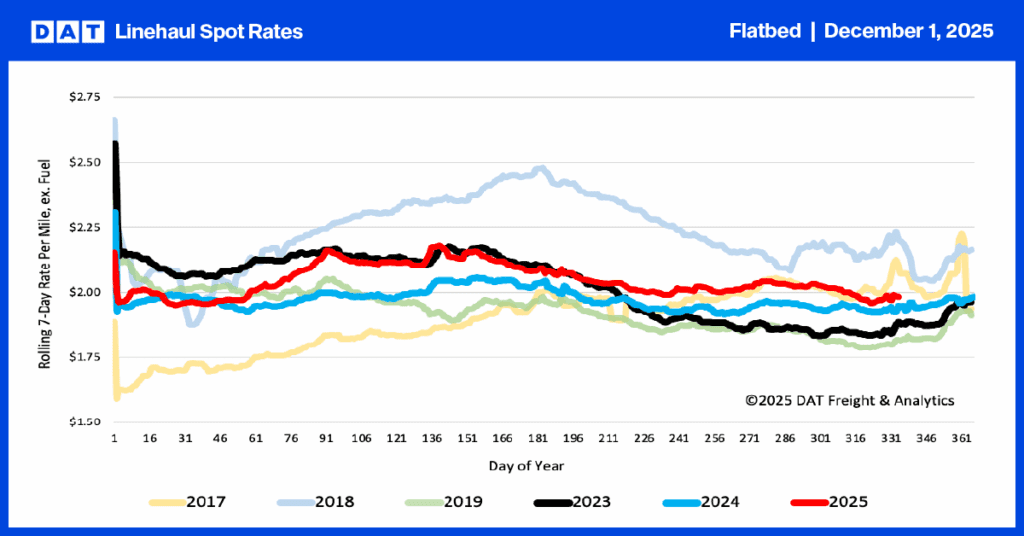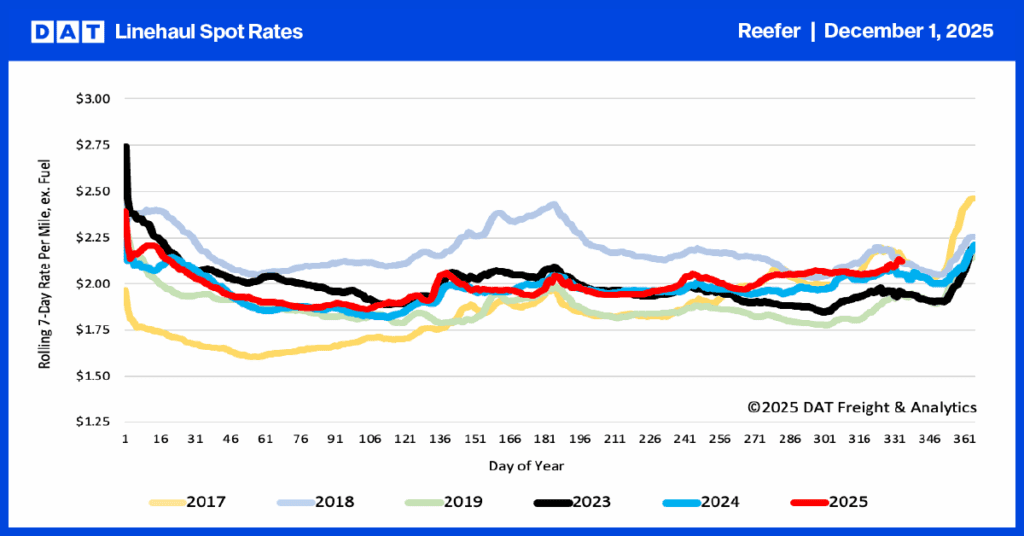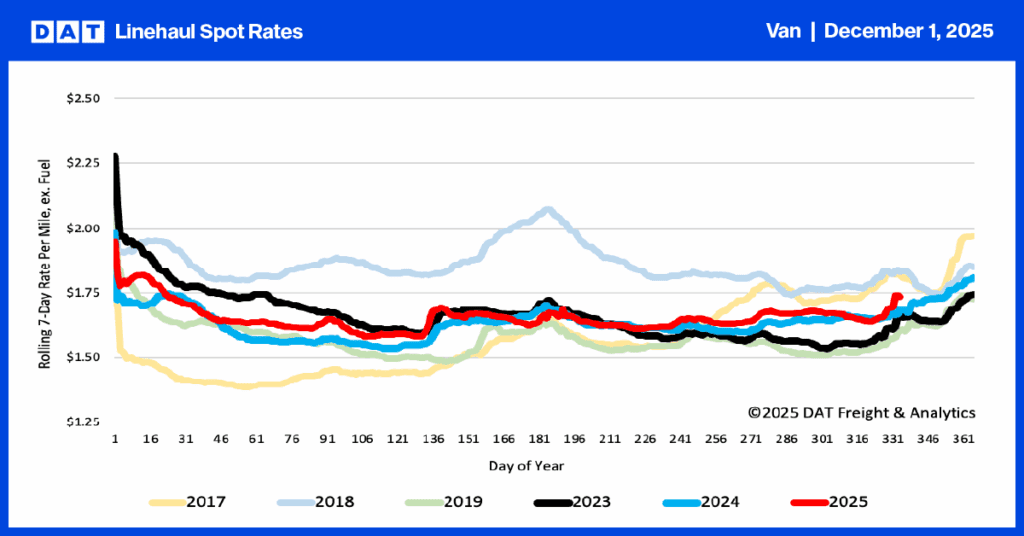As temperatures warm, we transition from fruits and vegetables grown abroad in the southern hemisphere (and some warmer U.S. markets) to our larger domestic markets — particularly California, where 58% of our domestic fruits and vegetables are produced.
It also means summer fruits like watermelons, cherries, grapes, peaches and strawberries hit our supermarket shelves.
May is a pivotal month for those in the produce freight sector. It’s the final month of the Florida winter/spring season. Imported produce volumes from Mexico begin to slow. And the large California produce season hits top gear.
Get the clearest, most accurate view of the truckload marketplace with data from DAT iQ.
Tune into DAT iQ Live, live on YouTube or LinkedIn, 10am ET every Tuesday.
With social distance regulations relaxing and restaurants reopening, there is a real sense that we’ll see much higher demand in the food service sector this summer. It may even be more than usual due to pent-up consumer demand.
According to the latest data from the USDA, the weekly truckload volume of domestic produce is still down 20% since last year — or the equivalent of 6,200 fewer truckloads each week. As of last week, imported produce volumes were up 6% at the same last year — or the equivalent of 1,400 more truckloads each week in cross-border markets. Overall, the truckload sector is down close to 5,000 truckloads compared to this time last year.
Some of that deficit will be offset by this week’s peak in strawberry shipping volume in California, which produces around 90% of all strawberries in the U.S. According to The California Strawberry Commission (STC), acreage for this summer’s crop planted last fall was up 5.7% compared to the previous season.
“California strawberry shipments are expected to peak in early May, with the state’s shippers projected to ship 10 million or more trays for several weeks,” says Chris Christian, Senior Vice President of STC.
At 10 pounds per tray on average, that’s the equivalent of 2,200 truckloads per week from the main strawberry growing regions in May. These regions include Salinas-Watsonville (39%), Santa Maria (33%) and Oxnard (15%), where we’re seeing strong spot market volumes and escalating rates this week.
California-grown strawberries are one commodity that long-haul carriers specialize in hauling, with the most popular cross-country destinations including Boston, New York and Philadelphia.
Using the country’s largest city as a load destination to gauge capacity tightness, spot rates* for the 3,000-mile loads to NYC from Salinas are paying $3.17/mile, which is $0.90/mile higher than this time last year. Loads from Santa Maria to NYC are the highest-paying of the three strawberry-growing regions at $3.65/mile, compared to $2.28/mile in May 2020. Loads from Oxnard to NYC are paying $3.26/mile this week — up $0.96/mile from last year this time.
The USDA is already reporting a shortage of trucks in all three regions. Forecasts from RateView Analytics predict spot rates to increase further and peak around June 6, tightening capacity further for strawberry loads to the Big Apple.
*Excludes fuel.


